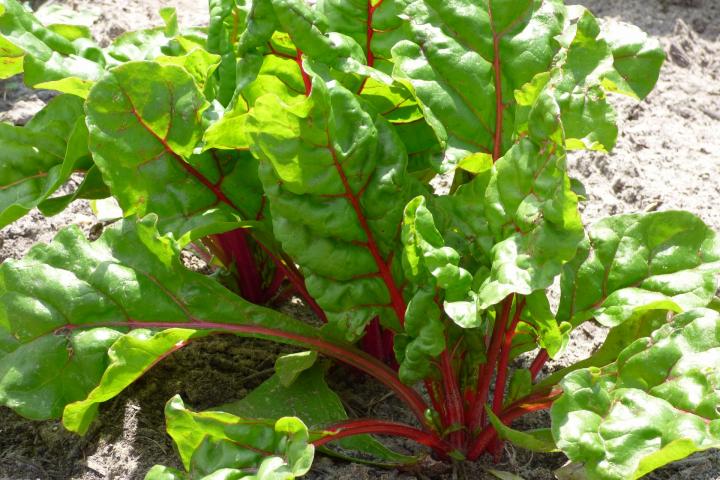
Swiss chart with its colorful stems.
Planting, Growing, and Harvesting Swiss Chard
- Chard can be used in salads to add color, in smoothies, in soups and stews, on pizzas, in sandwiches in place of lettuce, in quiches, and anywhere you use spinach or kale (especially if you dislike the latter).
- Swiss chard holds it shape well when cooked and adds a nutritious boost.
ADVERTISEMENT
This is my second year of growing chard. I did not know I could harvest and it would keep growing! Entire website was very informative and interesting. Thank you for sharing your knowledge.
I let my swiss chard grow to about 12" tall. I remove the outside leaves, wash them & trim most of the stalk off (they can be a little tough & bitter when grown that tall). I stack the leaves on my cutting board & slice 1 -1 1/2" strips across the leaves top to bottom. I toss them in my double boiler & let them steam for 5-7 min. stirring them or turning them over every few min. to make sure all leaves are cooked. I move the pot to the sink, empty the water from the bottom pot, put the top pot (with the holes) back on the bottom pot, sit it aside & let the remaining water drain out. You can use a skillet or the bottom pot - slice or mince some garlic - I've even used just plain garlic powder (not garlic salt). Pour a thin layer of oil in your pan/pot & throw in your garlic & let it cook a few min. (Does not need to be browned) Add your steamed swiss chard, cook the chard to your liking. Add
more garlic & a little salt. This makes a great side dish or can be added to cooked pasta
with romano and/or parmesan cheese. If you like garlic & swiss chard, You'll definitely
like this. I also use this same recipe with fresh spinach leaves -delicious!
On a trip to the Biltmore Estate last year I enjoyed a side dish at the Stable Café. It had Swiss Chard, tomatoes, celery, and I'm not sure what else was in it but it was delicious. I wish I could find that recipe!
This year I tried to grow some Swiss Chard with moderate success. Only one plant grew but it keeps abundantly producing as long as I trim off the older leaves. It does look attractive in my little side flower garden.
We planted Swiss Chard in pots a couples of years ago, and they are still producing big delicious stalks. Otherwise, we mulched the entire yard last winter and have been greeted this spring by a massive increase in our earwig population. They keep coming and like Swiss Chard as much as I do.
It's the end of September here in So. Calif. Do I still have time to plant Chard?










Comments